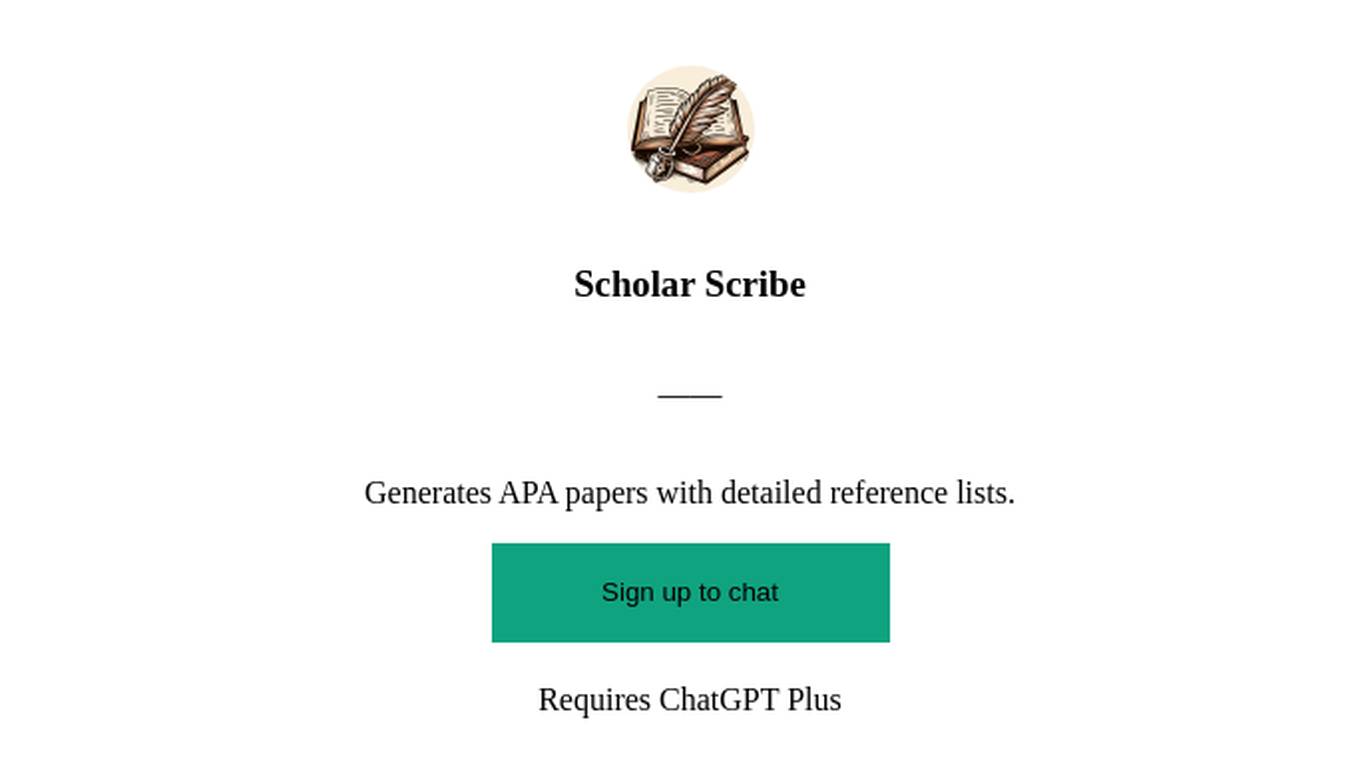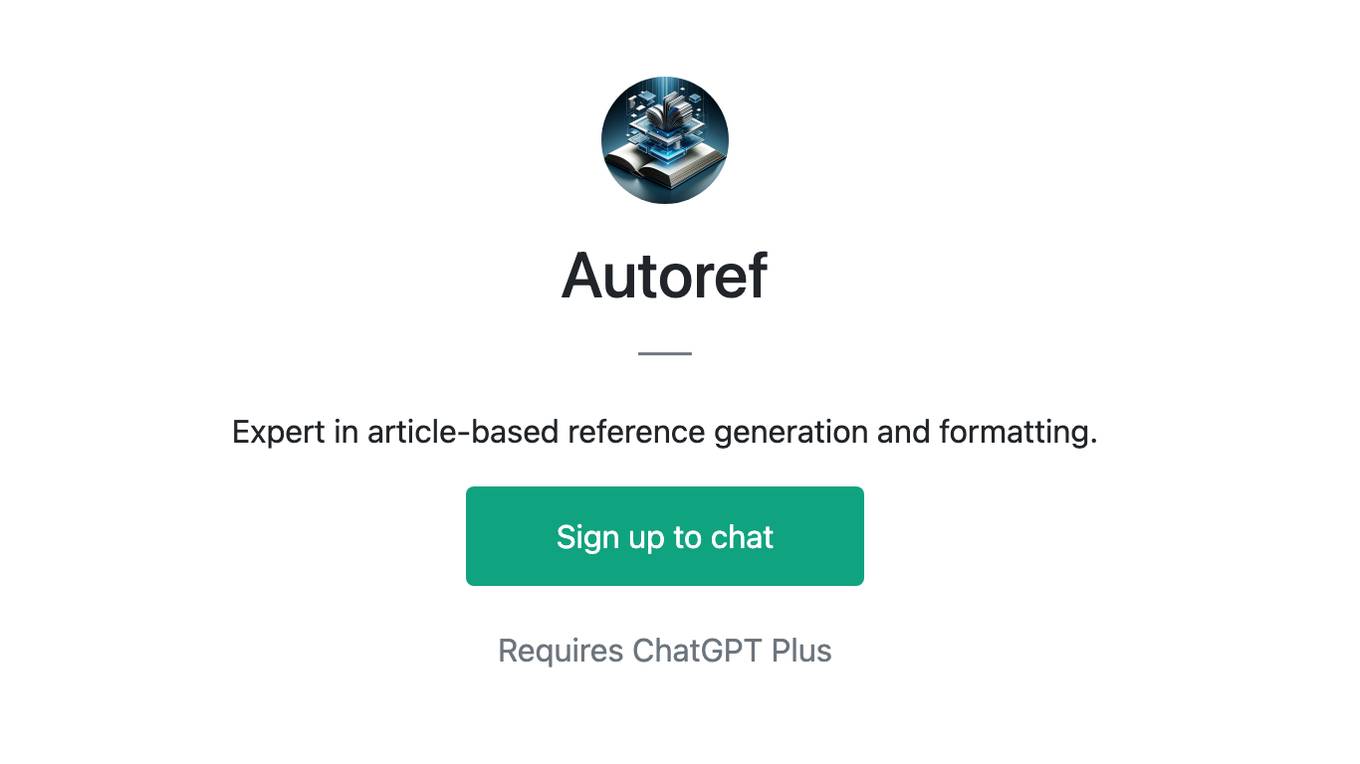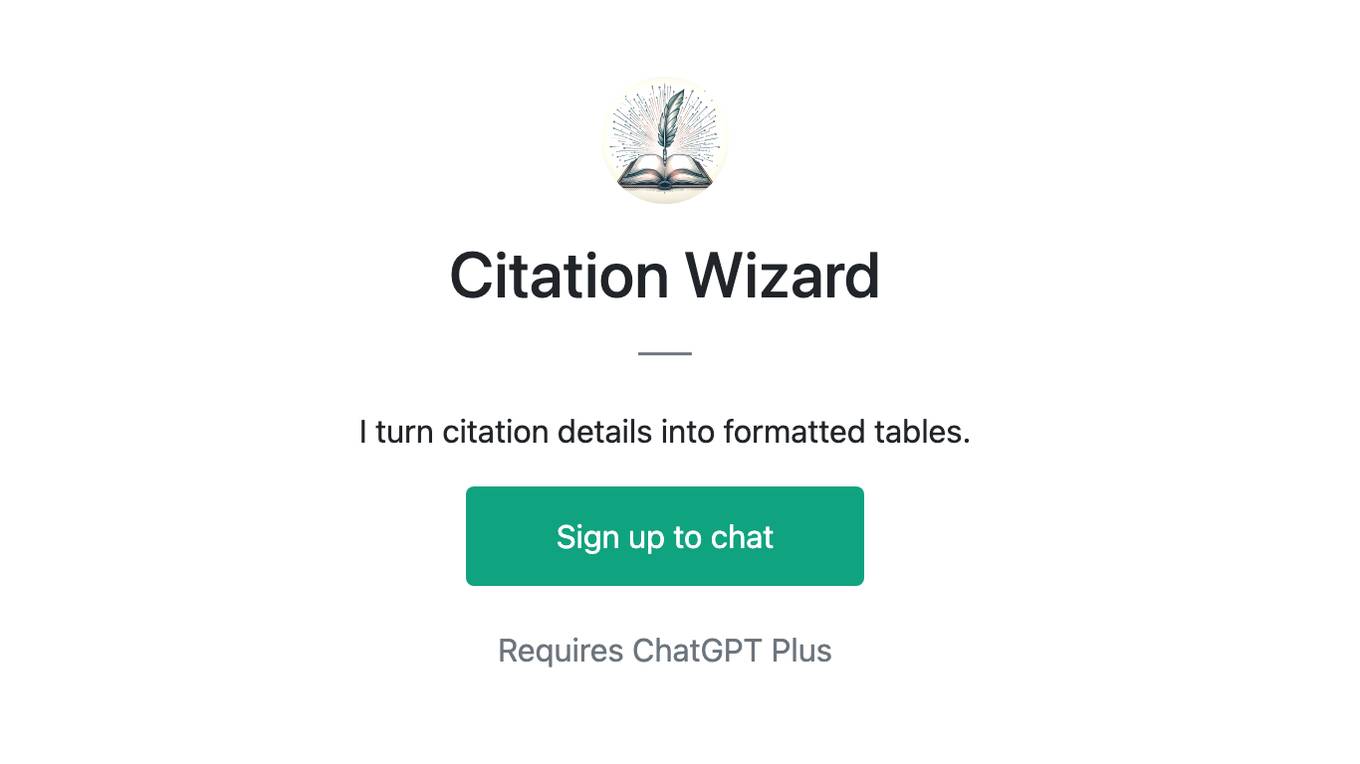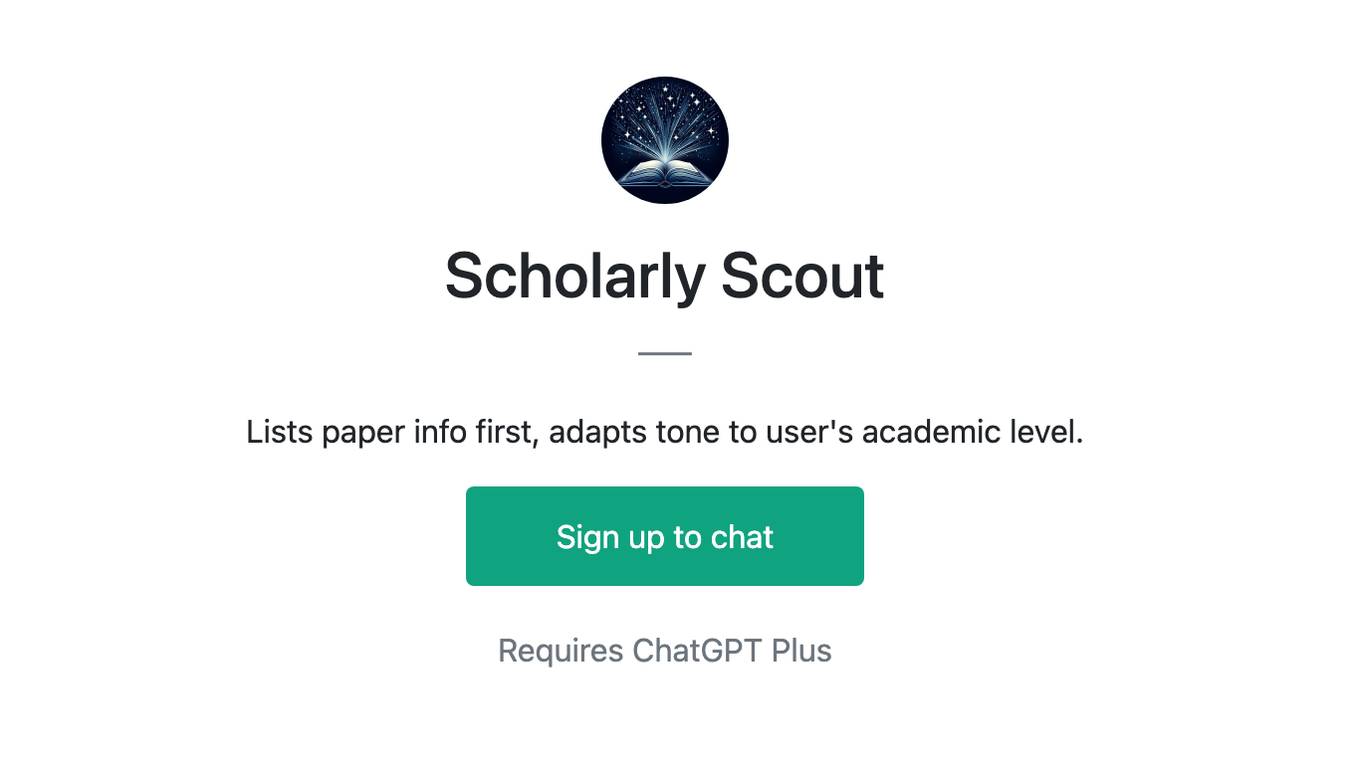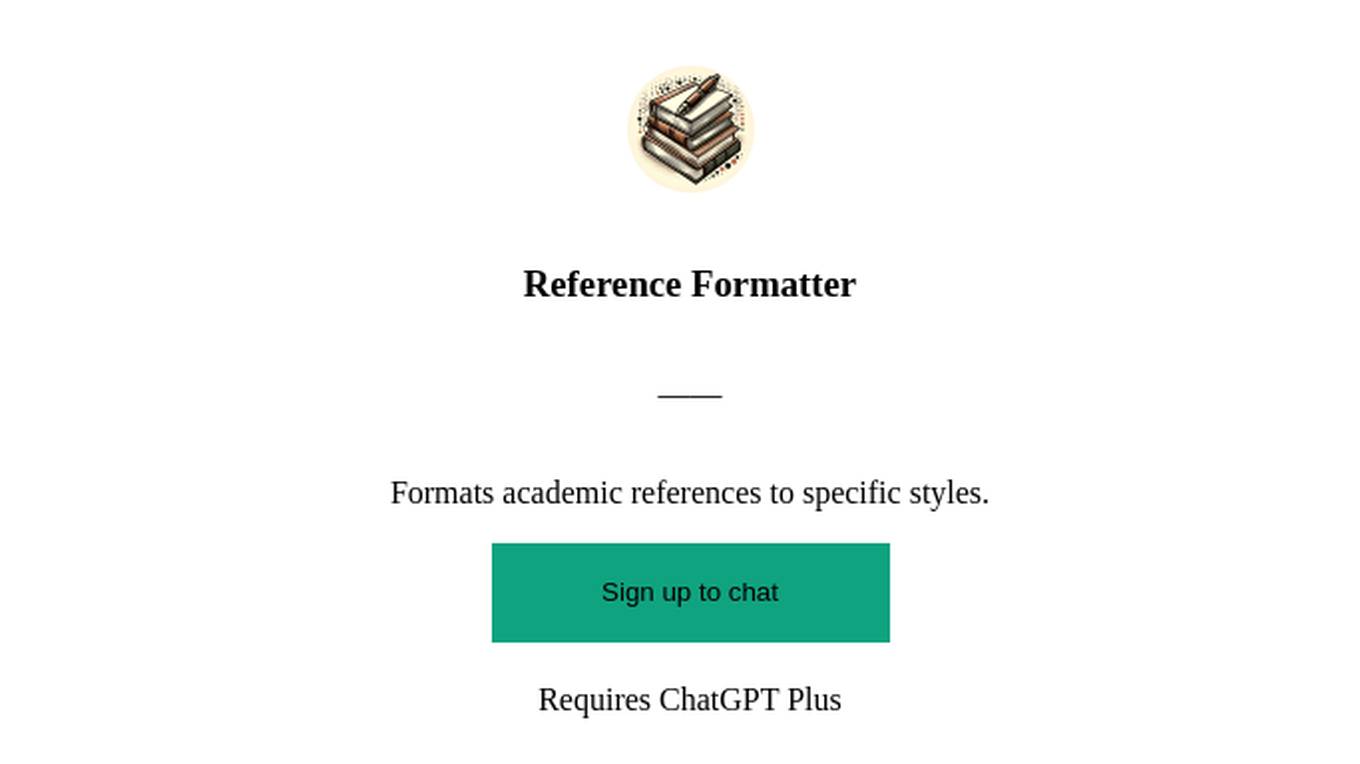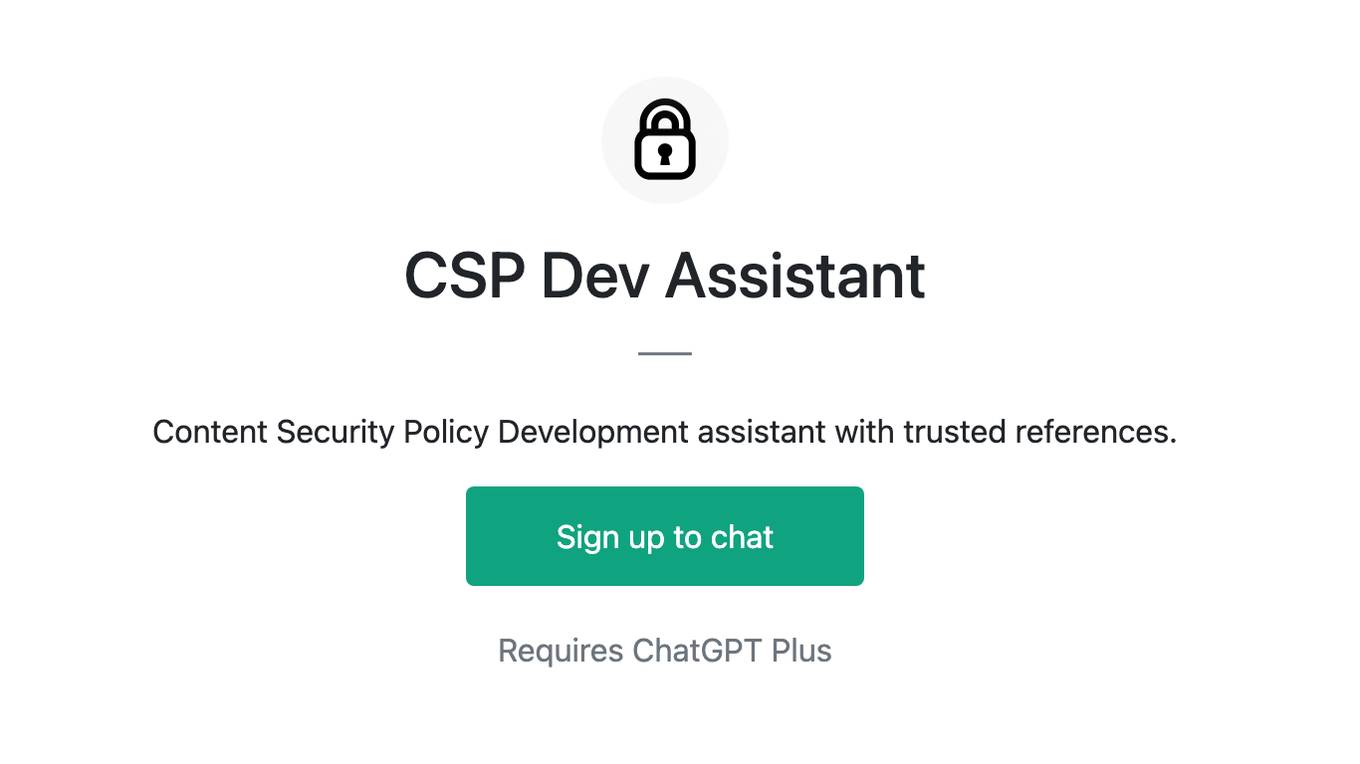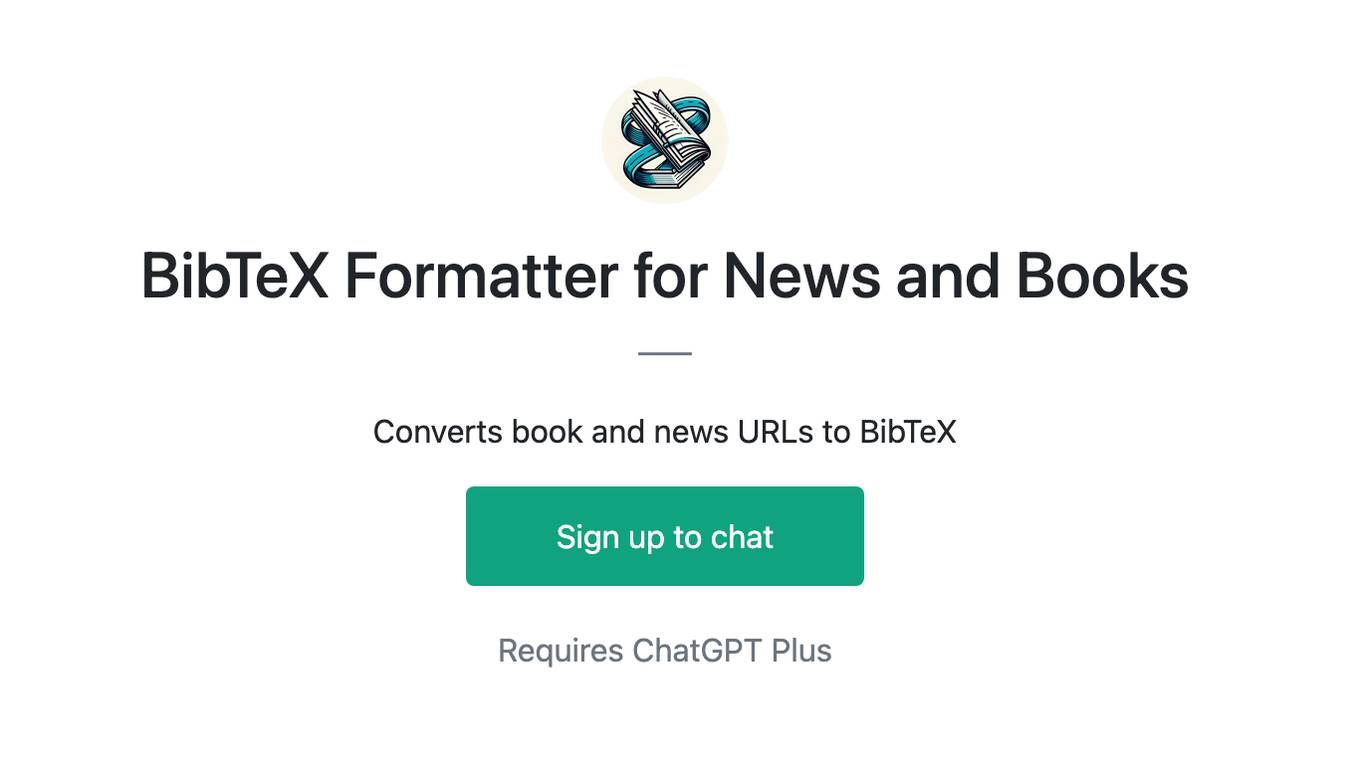Best AI tools for< Create Reference Lists >
20 - AI tool Sites

RikiGPT
RikiGPT is an AI tool designed for academic research, offering access to over 200 million scholarly sources. It provides enhanced writing experiences with detailed content, customizable reference lists, and integration with the latest GPT technology. Users can generate a 200-page thesis in just 1 minute, receive full academic chapters, and benefit from in-text citations and bibliography support. The tool also offers full translation services to over 100 languages, making it a comprehensive solution for research and writing needs.

Bibit AI
Bibit AI is a real estate marketing AI designed to enhance the efficiency and effectiveness of real estate marketing and sales. It can help create listings, descriptions, and property content, and offers a host of other features. Bibit AI is the world's first AI for Real Estate. We are transforming the real estate industry by boosting efficiency and simplifying tasks like listing creation and content generation.
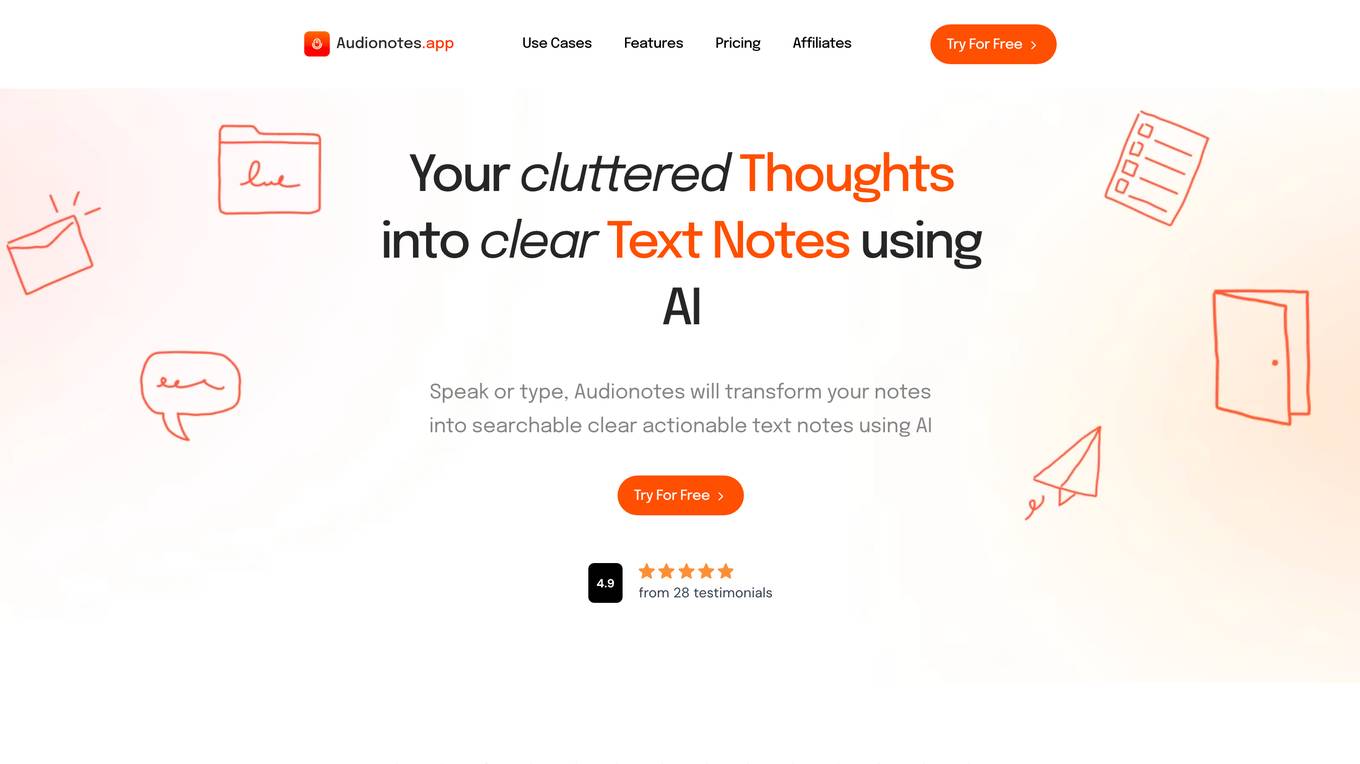
Audionotes
Audionotes is an AI-powered note-taking app that uses speech-to-text technology to transcribe and summarize audio recordings. It also offers a variety of features to help users organize and manage their notes, including the ability to create to-do lists, set reminders, and share notes with others. Audionotes is available as a web app, a mobile app, and a Chrome extension.

GoDaddy Domain Sale
The website appears to be a domain sale page for a specific domain related to wedding albums. It seems that the domain 'weddingalbum.ai' is listed for sale on the GoDaddy platform. The page indicates that the user does not have permission to access the specific URL. The error message 'Access Denied' suggests that the server is restricting access to the page. The reference number provided may be used for troubleshooting purposes. Overall, the website seems to be a platform for selling domain names, with the specific domain 'weddingalbum.ai' being one of the listings.

Listicle.club
Listicle.club is a domain that has expired and is currently parked for free by GoDaddy.com. The website does not provide any specific content or services at the moment. It seems to be a placeholder domain with no active features or functionalities. The site displays a copyright notice from 1999-2024 by GoDaddy, LLC, along with a disclaimer stating that references to any specific company, product, or services on the site are not controlled by GoDaddy.com LLC.

postai.pro
postai.pro is a domain that is currently up for sale. The website serves as a platform for the sale of the domain postai.pro. It was created using Sedo Domain Parking by the domain owner. The site provides information about the domain and offers it for sale to potential buyers. Please note that Sedo, the platform used to create the webpage, does not have any direct relationship with third-party advertisers. Any references to specific services or trademarks are not endorsed or controlled by Sedo.

Jusi Marketplace
Jusi Marketplace is an AI-powered platform that aims to increase the efficiency of website and web application development by up to 25%. It utilizes cutting-edge AI solutions to create Terms of Reference (TOR) for product development and match users with suitable studios in the marketplace. With features like AI-generated TOR, competitor analysis, project cost estimation, and performer selection, Jusi simplifies the process of creating website briefs and helps users make informed decisions for their projects.
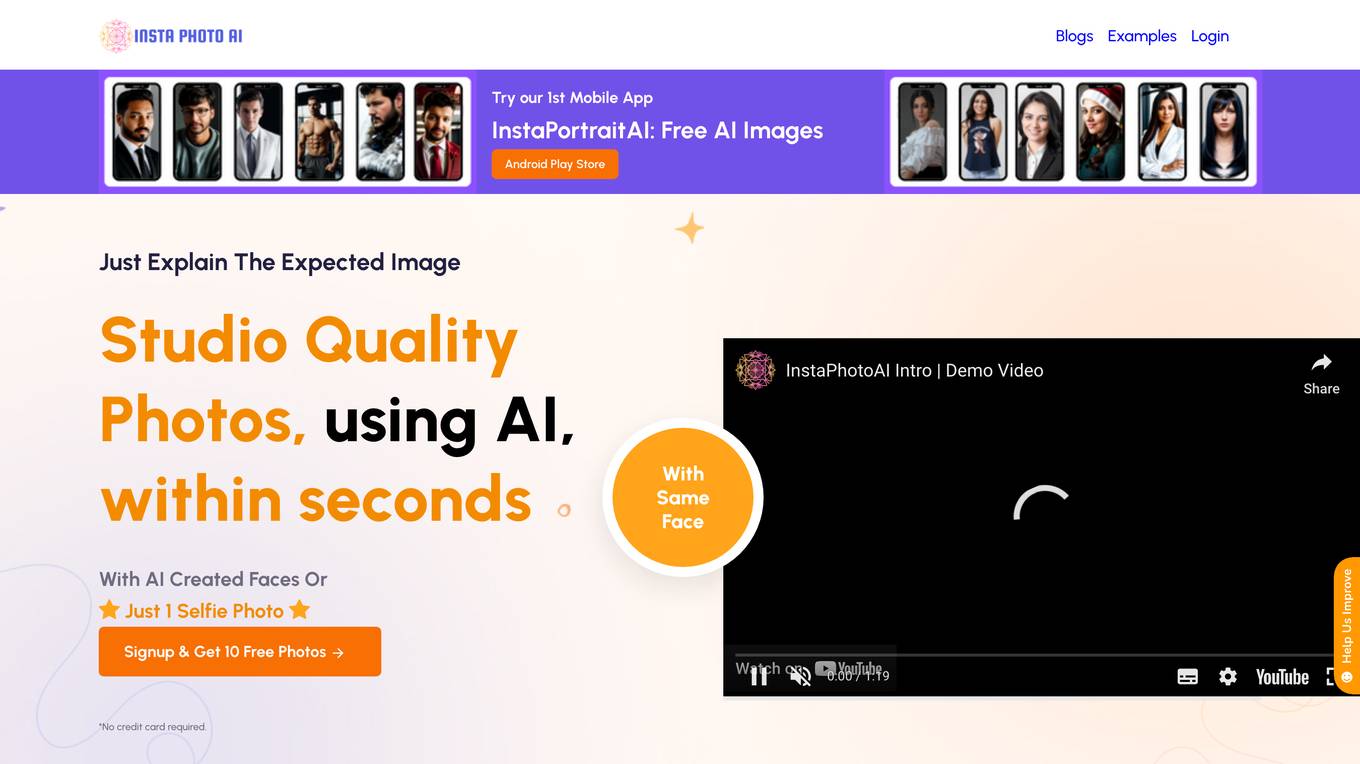
InstaPhotoAI
InstaPhotoAI is a web-based application that uses artificial intelligence to create realistic photos from scratch. With InstaPhotoAI, you can create photos of people, places, and things that look like they were taken with a real camera. The application is easy to use and can be used to create photos for a variety of purposes, including social media, marketing, and art.
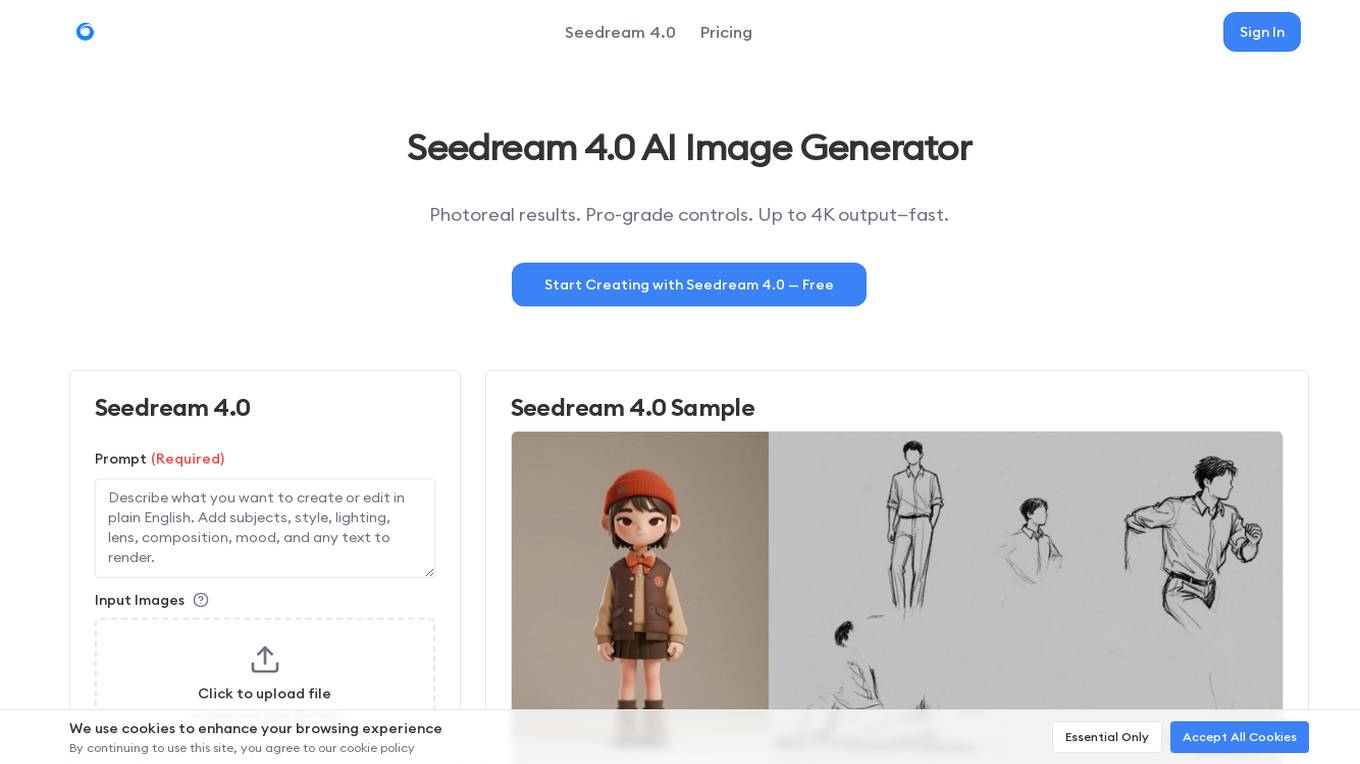
Seedream 4.0
Seedream 4.0 is a next-generation multi-modal AI image generator designed for creators to produce photorealistic images with pro-grade controls and fast rendering capabilities. It offers features such as deep scene understanding, reference-based consistency, artistic style transfer, ultra-fast rendering, sequential story generation, and commercial-grade design. Users can create stunning visuals with AI in four simple steps: adding references, describing their vision, generating and refining, and exporting in high resolution. Seedream 4.0 is ideal for various applications including narrative visuals, product sets, comics, ads, social carousels, posters, key visuals, and marketing graphics.
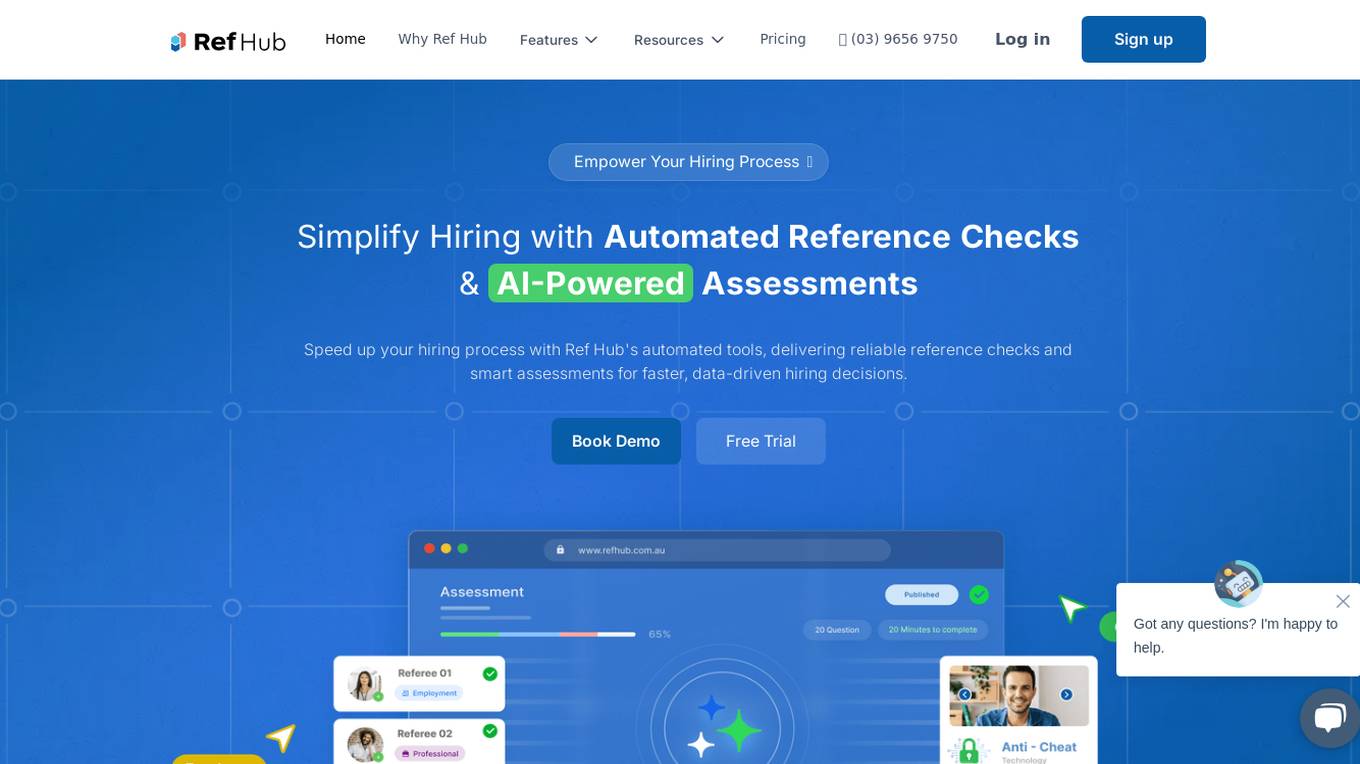
Ref Hub
Ref Hub is an AI-powered online reference checking software based in Australia. The platform offers automated reference checks, fraud detection, lead generation tools, survey builder, and mobile app for managing reference checks on-the-go. With AI assessments, users can test candidates' skills at scale. Ref Hub provides flexible solutions for businesses of all sizes, from startups to large enterprises, streamlining the hiring process with reliable reference checks and smart assessments.
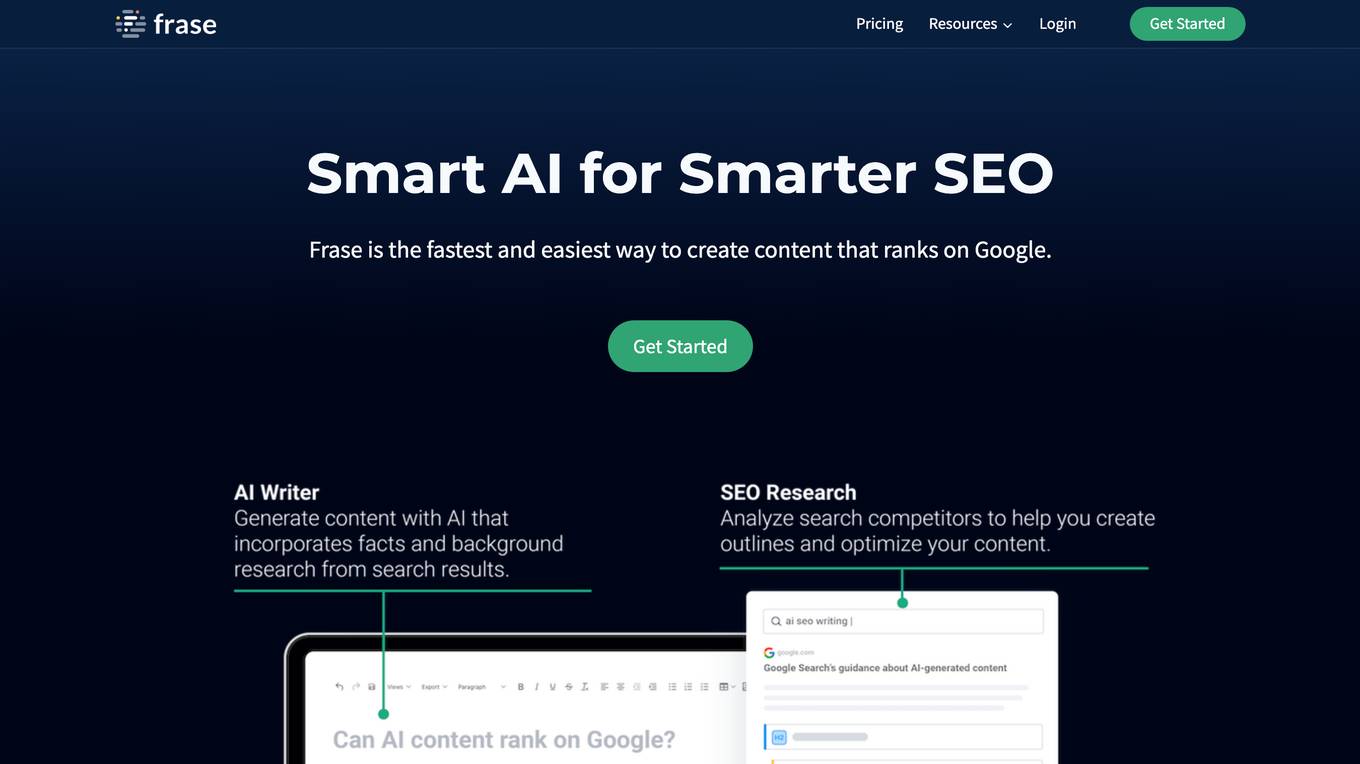
Frase
Frase is an AI-powered content optimization tool that helps users create long-form, SEO and GEO optimized content instantly. It offers features like Rank-Ready AI Documents, Brand Voice establishment, Content Editor for quick writing and rewriting, Content Optimization for SEO and GEO analysis, and Content Briefs generation. Frase also provides Content Opportunities alerts, SEO Analytics integration, and Reference Documents for internal knowledge. It is trusted by 30,000+ content creators, agencies, and in-house teams for research, outlining, writing, and optimizing content for organic growth.
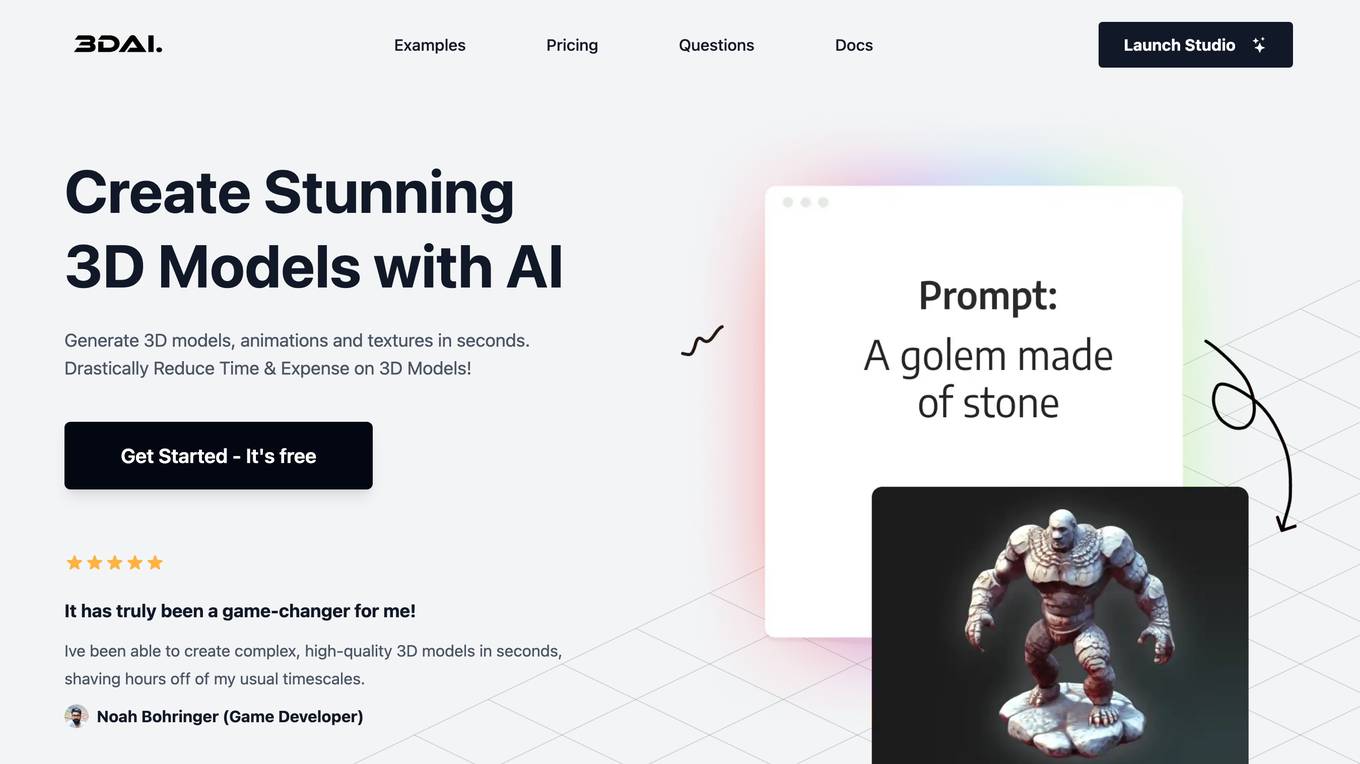
3D AI Studio
3D AI Studio is an AI-powered platform that allows users to create custom 3D models, animations, and textures in seconds. It is designed to be user-friendly and intuitive, with no requirement to master modeling or prompt crafting. Users can simply input a text prompt or upload an image for reference, and the platform will generate a high-quality 3D model in seconds. 3D AI Studio offers a range of features, including the ability to export models in a variety of formats, generate customized and realistic textures, and access a library of pre-made models. It is a valuable tool for a variety of professionals, including game developers, 3D artists, and designers.
Pixelfy
Pixelfy is an AI-powered tool that allows users to generate pixel art images for their creative projects. It provides a variety of battle-tested generators to create all types of images, including backgrounds, skill art, and pixel portraits. Pixelfy is packed with features to help users create the pixel art they want with ease, including a prompt builder, control grid size, advanced tuning, remove background, use reference images, and color palette control.
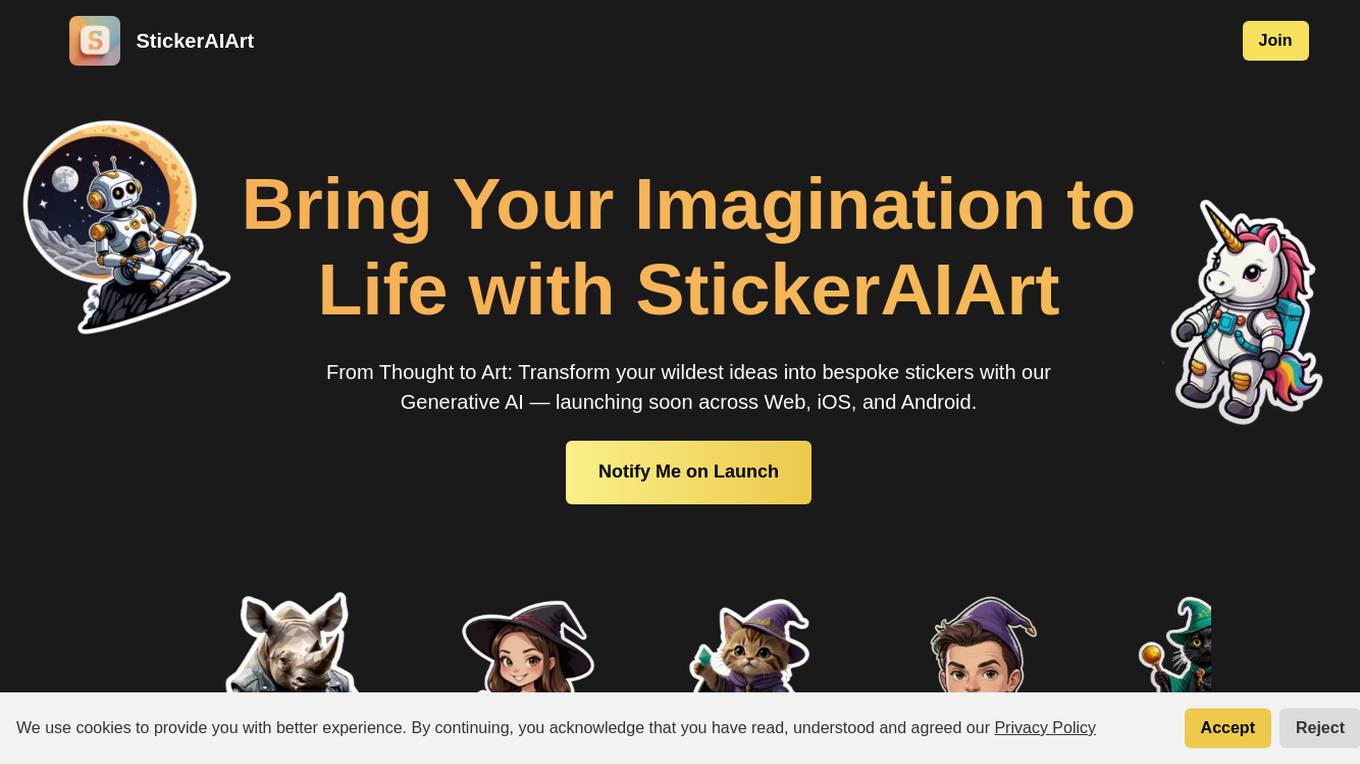
StickerAIArt
StickerAIArt is a cutting-edge mobile app that uses generative AI to create unique, custom stickers based on user input. Whether it's through a descriptive prompt, an uploaded image, or a style reference, StickerAIArt can generate a wide variety of sticker styles suitable for digital use and physical printing. With its user-friendly interface and advanced AI technology, StickerAIArt empowers users to unleash their creativity and bring their imagination to life.

Seedream 4 AI
Seedream 4 AI is an AI-powered online tool that offers text-to-image generation and editing capabilities. Users can create stunning 2K images by providing simple text prompts, without the need for design skills. The tool combines text-to-image and image editing functionalities with MoE acceleration for professional results. Seedream 4 AI provides diverse artistic styles, lightning-fast generation, and high-quality output, making it a valuable resource for content creators, digital artists, and individuals looking to enhance their images.
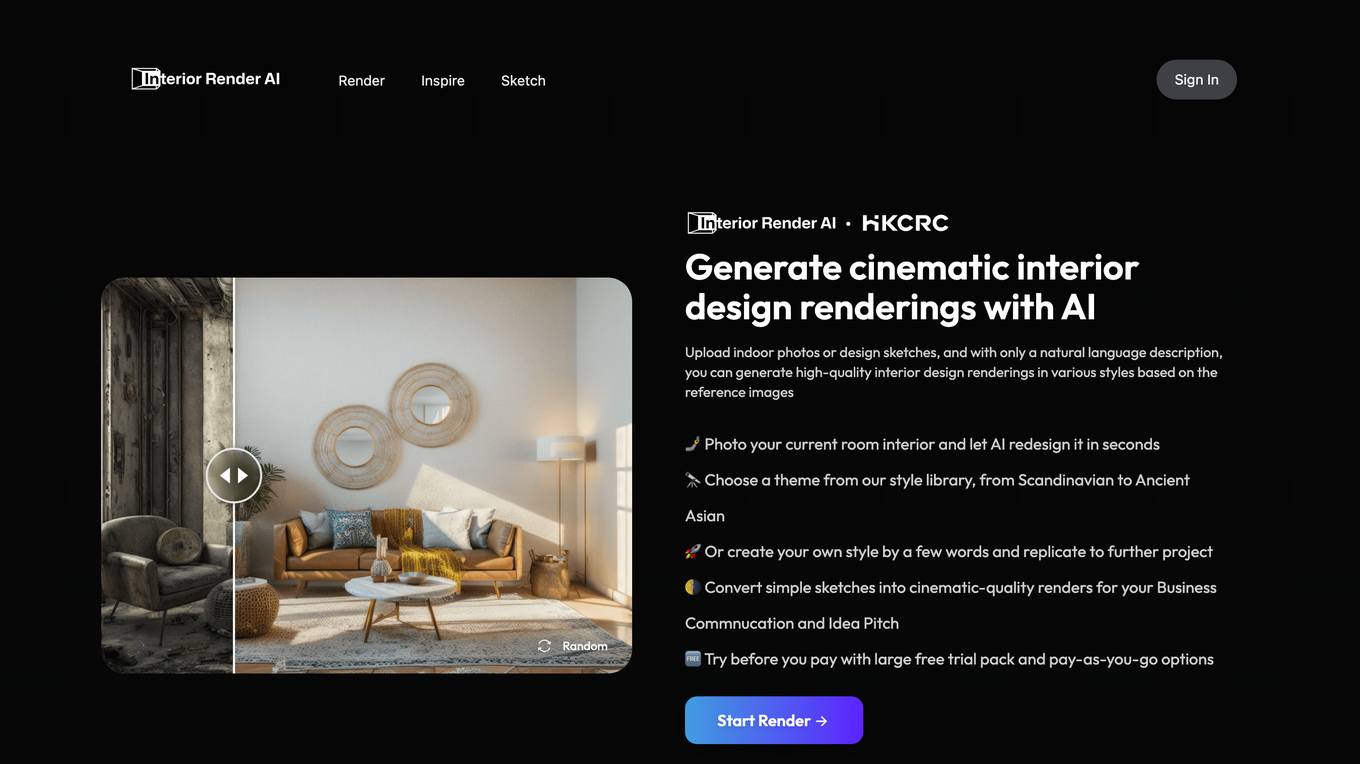
Interior Render AI
Interior Render AI is an AI-powered interior design tool that allows users to generate high-quality interior design renderings in various styles based on reference images. Users can upload indoor photos or design sketches and provide a natural language description of their desired style. The AI will then generate realistic and visually appealing renderings that can be used for inspiration, communication, and idea pitching. Interior Render AI is a valuable tool for interior designers, architects, and anyone looking to redesign their space.
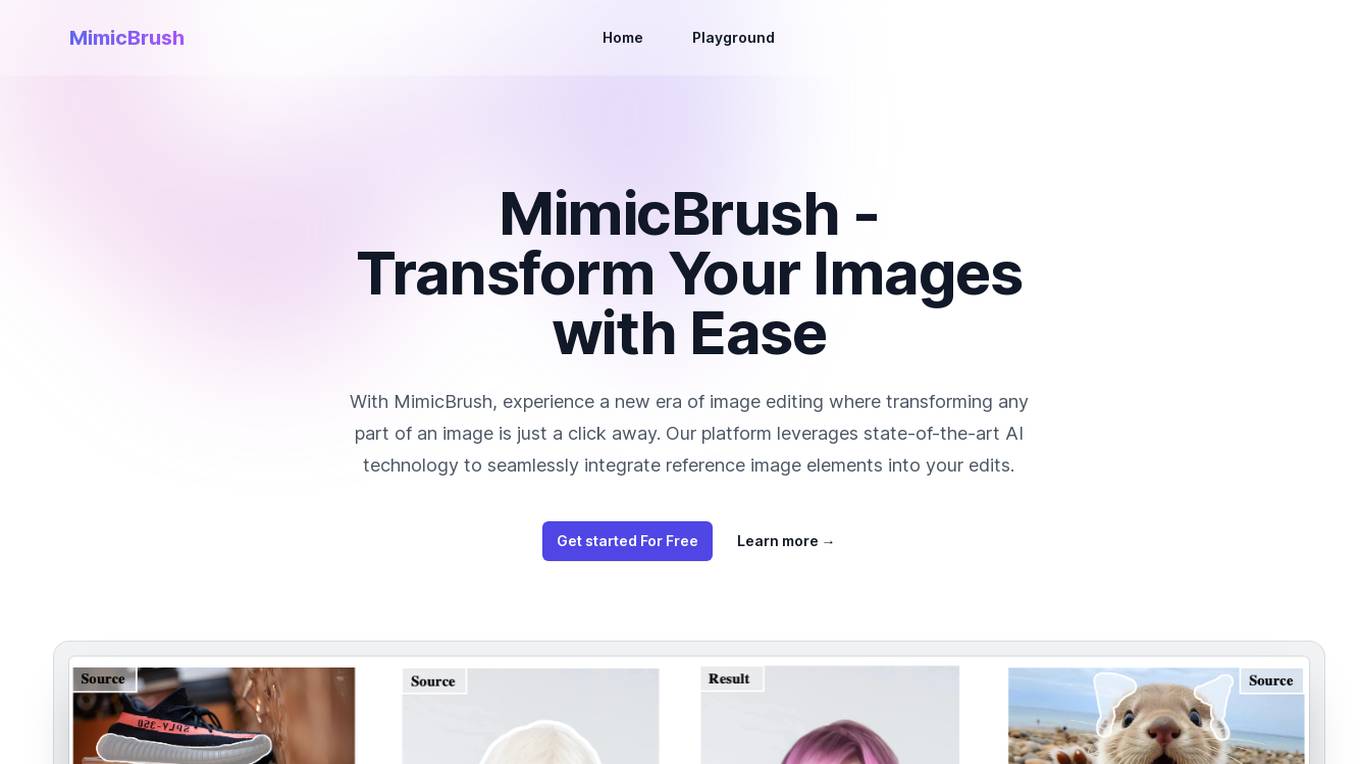
MimicBrush
MimicBrush is an advanced AI-powered online image editing tool that revolutionizes the editing process by seamlessly integrating reference image elements into edits. With its imitative editing technique, MimicBrush offers high-quality, realistic image modifications with unparalleled precision and versatility. The platform allows users to make simple image edits, automated processing, localized modifications, texture transfers, and post-processing refinements effortlessly. Whether you're a beginner or a professional, MimicBrush provides a user-friendly interface and powerful features for all your image editing needs.

SunoV5 AI
SunoV5 AI is the world's most advanced music generation platform that utilizes revolutionary AI technology to create professional-quality music with enhanced genre accuracy and studio-grade quality. Users can easily describe their musical vision or upload reference audio to guide the AI in generating complete songs up to 8 minutes long. With lightning-fast generation, global genre support, and smart genre detection, SunoV5 offers a seamless music creation experience for musicians, content creators, and professionals.
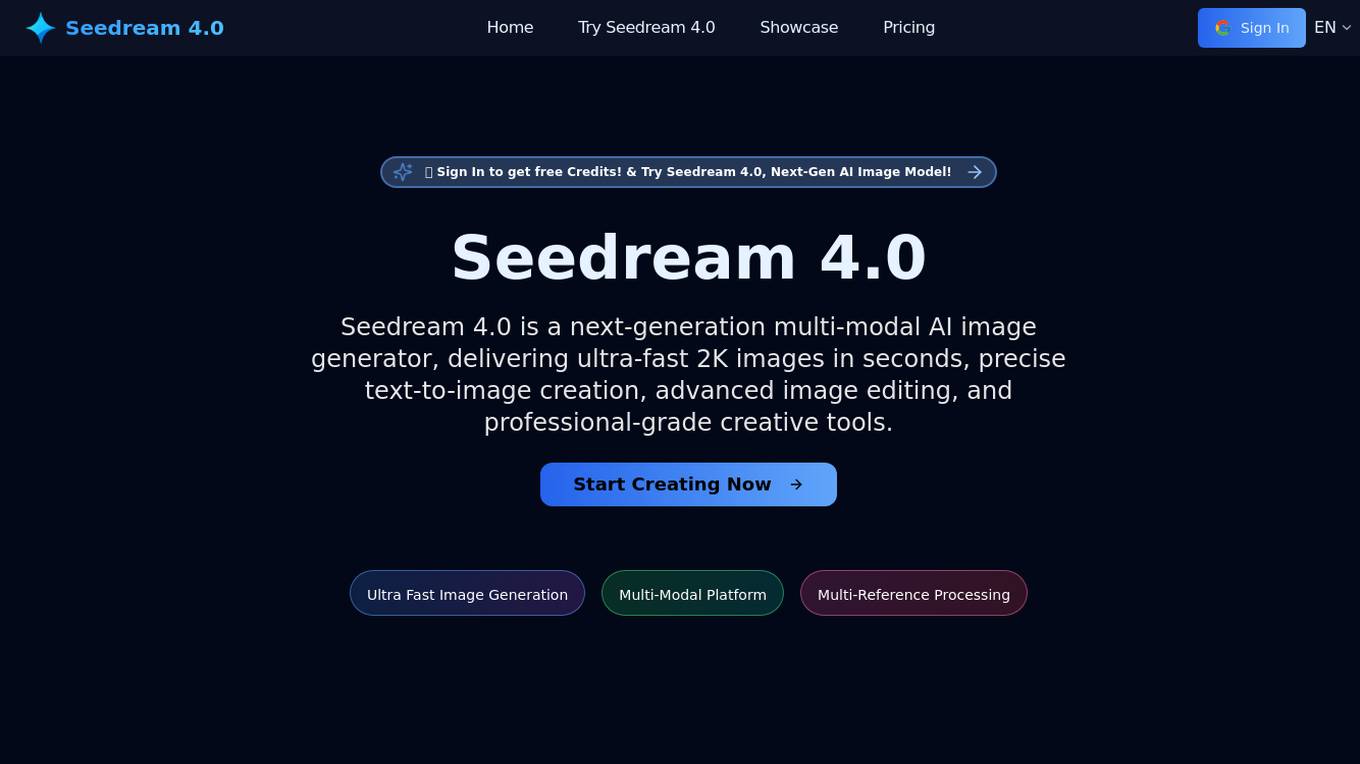
Seedream 4.0
Seedream 4.0 is a cutting-edge multimodal AI image generator and editor developed by ByteDance. It revolutionizes visual content creation by delivering ultra-fast 2K image generation, precise text-to-image creation, advanced image editing, and professional-grade creative tools. The platform offers features like high-resolution image generation in seconds, multi-reference processing, batch generation technology, and native bilingual support for Chinese and English prompts. Seedream 4.0 is designed to cater to professionals and creators seeking speed, precision, and versatility in their visual projects.
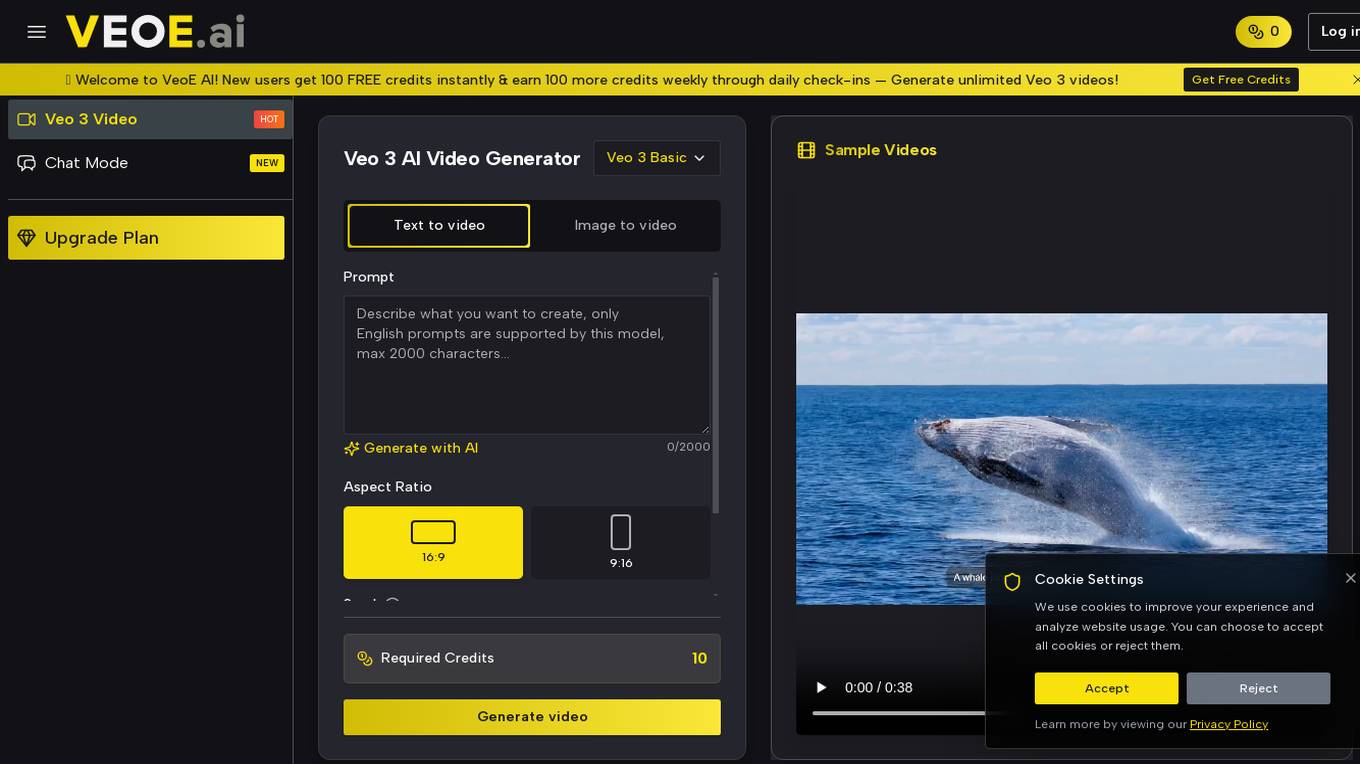
VeoE AI
VeoE AI is a revolutionary AI-powered video generator tool that transforms creative ideas into stunning videos with audio automatically. Powered by Google's advanced Veo 3 AI model, it offers seamless automatic generation, lightning-fast creation, and easy-to-use features. The tool analyzes text descriptions and reference images to create professional-grade videos with natural audio synchronization and unlimited creative possibilities. VeoE AI is designed for content creators, filmmakers, and professionals looking to enhance their video generation experience with high-quality results.
0 - Open Source AI Tools
20 - OpenAI Gpts
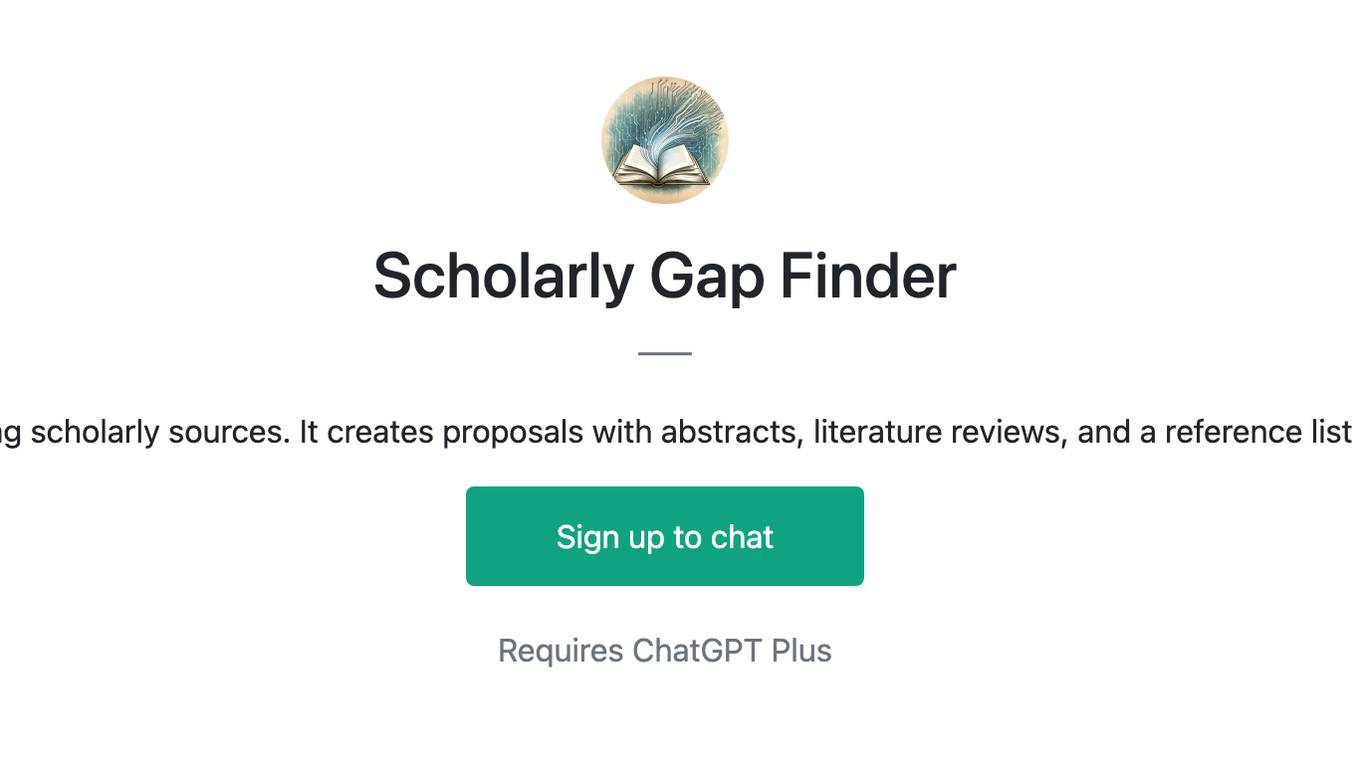
Scholarly Gap Finder
SGF identifies research gaps using scholarly sources. It creates proposals with abstracts, literature reviews, and a reference list tailored for academic research.
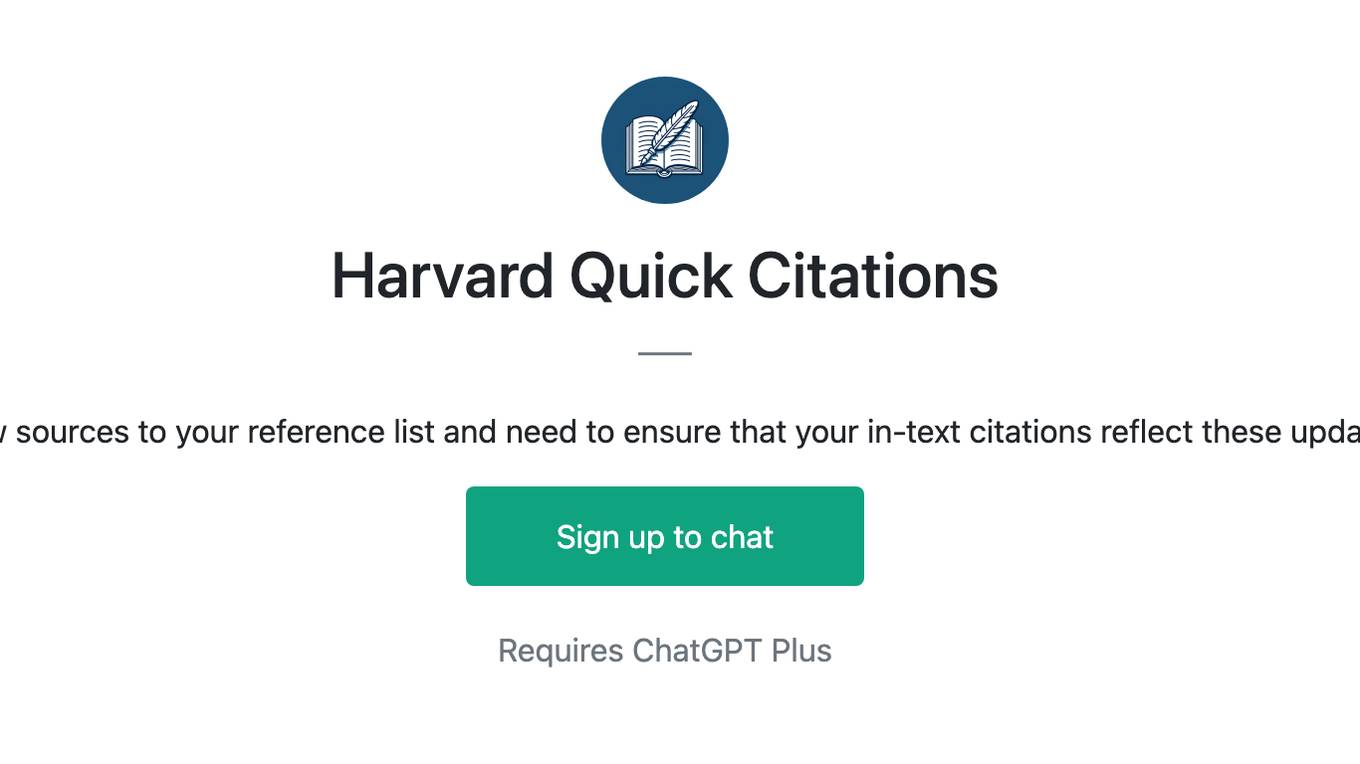
Harvard Quick Citations
This tool is only useful if you have added new sources to your reference list and need to ensure that your in-text citations reflect these updates. Paste your essay below to get started.
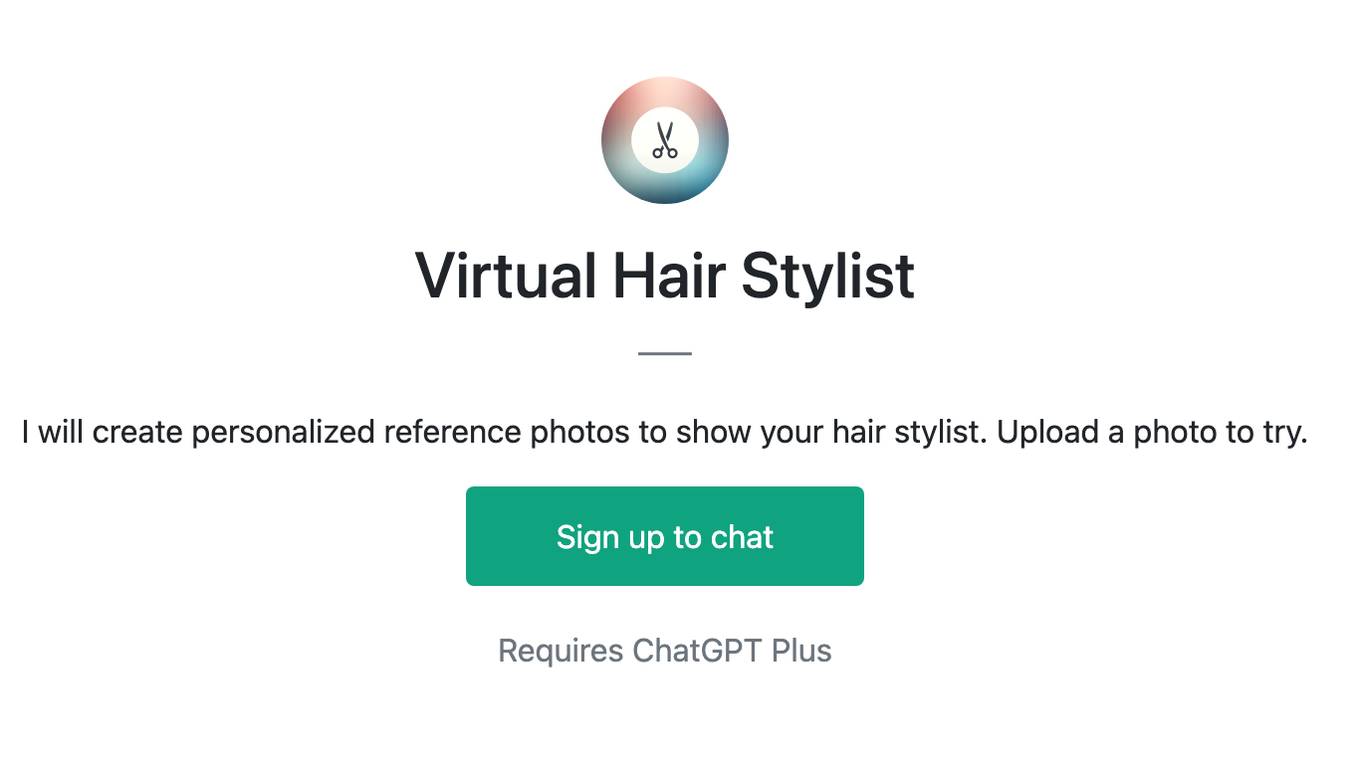
Virtual Hair Stylist
I will create personalized reference photos to show your hair stylist. Upload a photo to try.

DUMPTY CARICATURE !
"Dumpty Caricature: Elevate your designs with playful caricature illustrations. Just share your reference image for inspiration, and watch your vision come to life in a fun, exaggerated caricature style. Perfect for branding, marketing, and personal projects!"

cinematic character costume concept design master
Upload an avatar and indicate the costume concept to design the movie character costume concept and set different angles for reference.
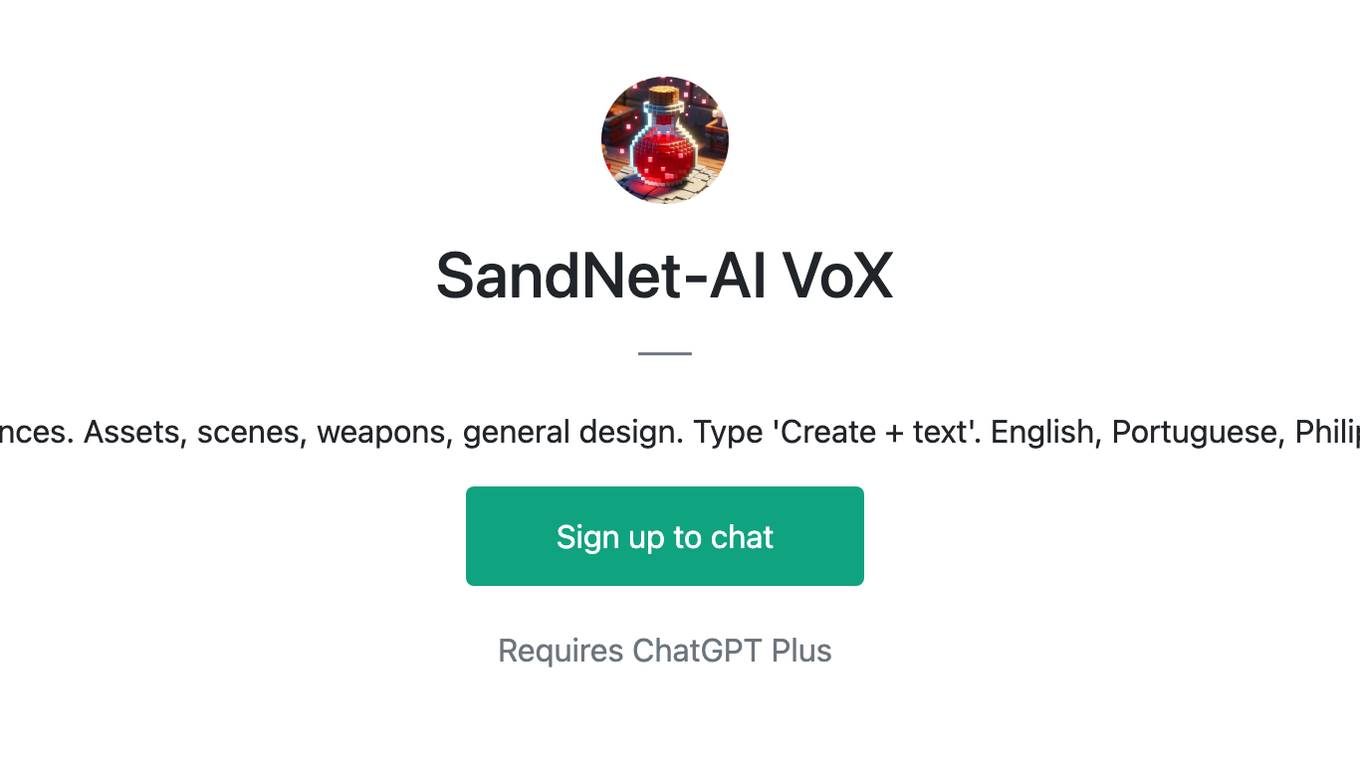
SandNet-AI VoX
Create voxel art references. Assets, scenes, weapons, general design. Type 'Create + text'. English, Portuguese, Philipines,..., +60 others.
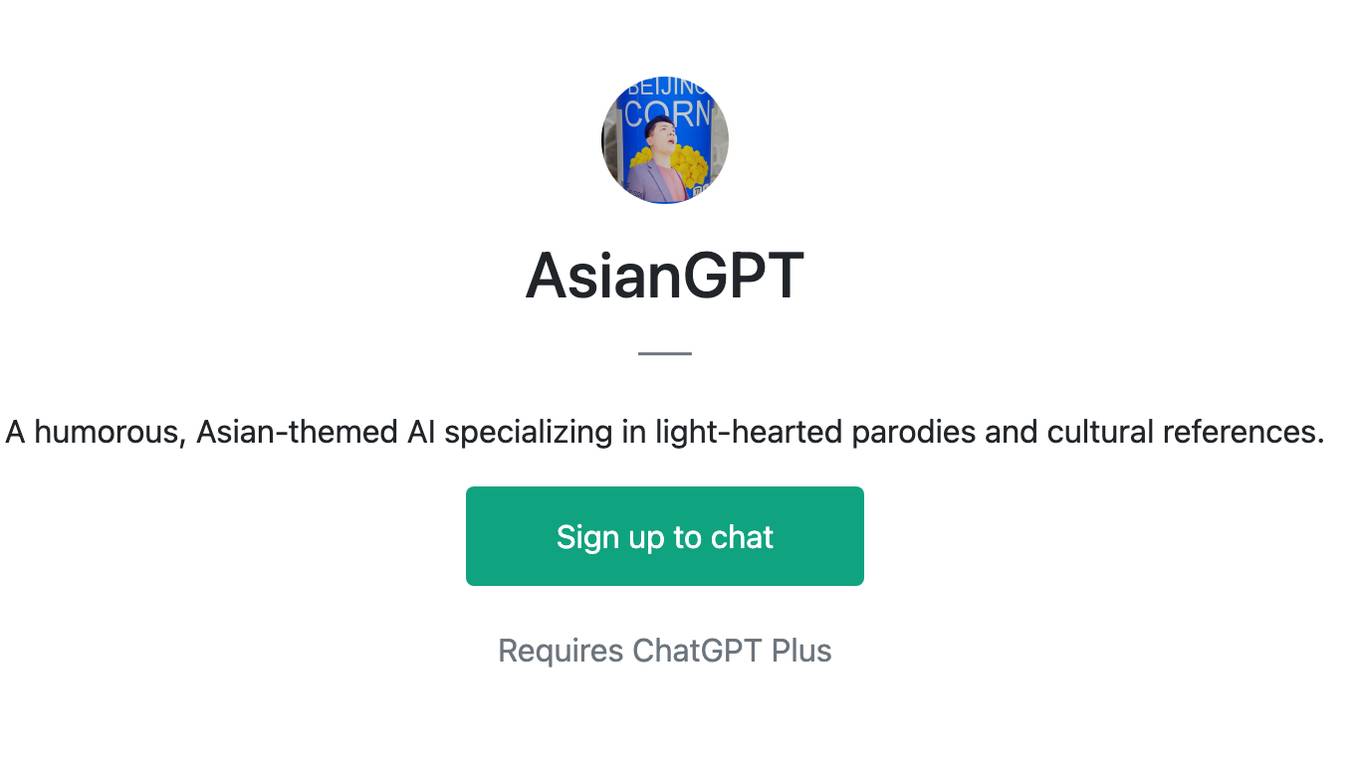
AsianGPT
A humorous, Asian-themed AI specializing in light-hearted parodies and cultural references.

继续教育项目写作助手
是一个可以帮助你撰写继续教育项目申请书的功能。它可以根据你的项目主题、项目目标、项目内容、项目预算、项目效果等信息,为你生成一份符合格式要求和逻辑结构的项目申请书草稿。它还可以提供一些参考文献和范文,帮助你完善和优化你的项目申请书。
